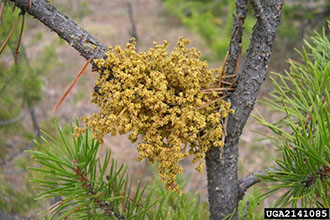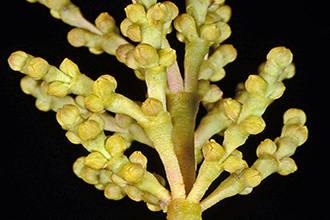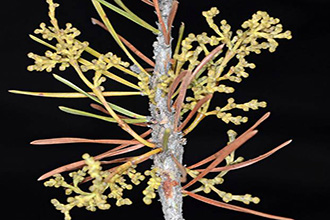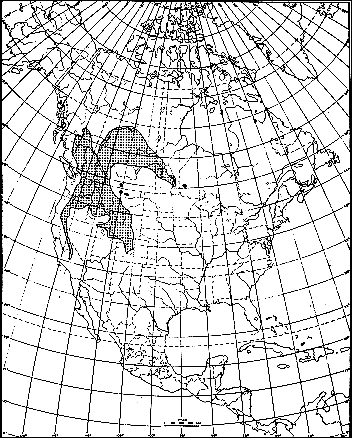Lodgepole pine dwarf mistletoe (Arceuthobium americanum) is a native, parasitic, seed plant that occurs essentially through-out the range of lodgepole pine in North America...The parasite gathers nourishment through the network of absorbing strands within the pine's cortex and xylem.
Dwarf mistletoe development depends directly on the vigor of the host tree: the more vigorous the tree, the more vigorous the mistletoe. On good sites with vigorous hosts, the proportion of trees infected is higher than on poor sites, although the effects of the parasite are less on better sites.
Clearcutting is the best way to control dwarf mistletoe in mature lodgepole pine. All infected trees should be cut, or the sanitation value of the operation will be lost...Even where stands are properly clearcut, some infection will develop in the regeneration bordering infected areas. (Forest Insect & Disease)



